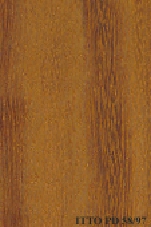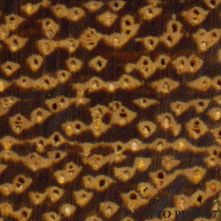
TALI (Erythrophleum suaveolens)
Trade Name
Tali
Scientific Name
Erythrophleum suaveolens Brenan
Family
LEGUMINOSAE
Common Names
Tali (Guinea); Alui (Côte d`Ivoire); Elondo (Spain); Elondo (Portugal); Elone (Gabon); N'kassa (Congo); Eloun (Cameroon); Muave (Zambia); Tsa; Teli; Telehi; Tehi; Talo; Tali y roble africano; Sassy bark; Sangay; Sahi; Sachi; Red water tree; Peli; Ovinyin; Orhue; Ordeal tree; Orachi; Oginyi; Oginni; Odiodi; Nko; Nkassa; Ngogbei; Ndom; Mumara; Mkola; Mkelekele; Mkarati; Meli; Mbele; Mbaraka; Manconi; Macone; Kwon; Kulenten; Kokudabo; Koe-kon; Kekeu; Keke-au; Kbande; Ka-kontha; Jru; Jallin baro; Ipomi; Inyin; Inyi; Ifwon; Idip; Gwaska; Guilutu; Guhie; Gue; Gogwi; Gbangba-gbende; Etsa; Erun obo; Erui-alui; Erui; Erue; Elun; Elui; Elon; Ellong; Elegue-muani; Digpende; Burene; Bungoro; Buirane; Buirame; Boutite; Bolondo; Betomo; Betiche; Bentabe; Baska; Baier; Atsa; Atiuhia; Atiemia; Arue; Alui; Akwir; Akpa etuidiwi; Akpa; Adjuga; Abawa; Aba; A-kon; Missanda (United Kingdom); Muave (Zaire); Mwavi (Tanzania); Missanda (Mozambique); Kassa (Zaire); N`kassa (Congo); Elondo (Equatorial Guinea); Eloun (Gabon); Elone (Cameroon); Sasswood (Nigeria); Erun (Nigeria); Potrodom (Ghana); Mancone (Guinea-Bissau); Gogbei (Sierra Leone); Tali (Senegal); Tali (Côte d`Ivoire)
Scientific Name Synonyms
Fillaea suaveolens Guill. & Perr.; Erythrophleum guineense G. Don
Description Of The Tree
Botanical Description
The tree is up to 30 to 45 in height, with a bole length of 10 to 16 m, usually irregular, often buttressed. The trunk diameter attains 100 to 150 cm.
Natural Habitat
Erythrophleum suaveolens occurs in moist forests, dense dry forests and along riverbanks.
Natural Distribution
West, Central and East Africa, mainly in Guinea, Central African Republic and Democratic Republic of the Congo.
Wood Identification
Anatomic Description Of Wood
Wood diffuse porous. Occasionally vessels exclusively solitary (over 90%). Tangential diameter of vessel lumina 200 micras or more (large). Vestured pits. Vessels per mm2 less than 6 (rare). Simple perforation plates. Vessel-ray pits similar to intervessel pits Paratracheal axial parenchyma scanty and/or vasicentric. Axial parenchyma aliform. Prismatic crystals in short chains in chambered axial parenchyma cells. 3 to 4 cells per parenchyma strand. Rays more than 10 per mm (abundant). Rays and/or axial elements irregularly storied. Rays 1 to 4 seriate. Homogeneous rays and/or sub-homogeneous rays (all ray cells procumbent). Non-septate fibers. Fibers with simple to minutely bordered pits.
-
 Wood Macro Photo Tangential Plane
Wood Macro Photo Tangential Plane
-
 Wood Micro Photo Of Transversal Section
Wood Micro Photo Of Transversal Section
Availability
Cites Status
Unrestricted
General Wood Description
Color
The sapwood is yellowish white to pinkish white, it has a thickness of 3 to 6 cm. The heartwood is yellow-brown to red brown, darkening on exposure, it is clearly demarcated.
COLOR INDEX (1=Black, 7=Light yellow,white)
4
Grain
The grain is highly and systematically interlocked; special care is needed when drying because of frequent risks of distortion.
Texture
The texture of the wood is frequently coarse.
Natural Durability
Very durable to decay; without preservative treatment. This species is especially suited for all the uses with risks of permanent or long-lasting humidification. Resistant to termites attack. Heartwood is resistant to Lyctus attacks.
Natural durability index (1= Very high durability, 7=Vey low durability)
1
Internal Growth Stresses
No residual stresses are reported in this species.
Silica Content
Silica Content: Negligible content of silica is reported. Amounts over 0.05% may affect wood processing. Silica Value: 0.01
Resistance To Impregnation
Nearly impossible to treat with a too much low penetration of the preservative substances.
Wood Physical Properties
Basic Density or Specific Gravity (O.D. weight/vol. green) (g/cm³)
0.83
Air-dry Density (Weight and volume at 12%MC) (g/cm³)
0.96
Total shrinkage Tangential (Saturated to 0%MC) (%)
10.5
Total shrinkage Radial (Saturated to 0%MC) (%)
5.7
Drying Defects
Ease of Drying: Drying is slow but without difficulties. Drying Defects: No particular risks of drying defects, subject to normal drying conditions. Kiln Schedules: The kiln schedule has been tested.
Recommended Dry Kiln Schedule
FR-13
Dimensional stability ratio (Total Tangential Shrinkage %/Total Radial Shrinkage %)
1.8
Wood Chemical Properties
Wood Mechanical Properties
Bending Strength (MOR),12%MC (kgf/cm²)
1181
Stiffness (MOE) 12%MC (kgf/cm²)
133923
Compression parallel to fiber 12%MC (kgf/cm²)
801
Compression perpendicular to fiber 12%MC (kgf/cm²)
116
Shear strength radial 12%MC (kgf/cm²)
88
Janka hardness (side) 12%MC (kgf)
1148
Janka hardness (end grain) 12%MC (kgf)
1167
Workability
Sawing
Sawing of this species requires powerful equipment.
Rotary Veneer Cutting
Not suitable for veneering.
Sliced Veneer
Not suitable for veneering.
Blunting Effect
Moderate blunting effect; stellited blades for sawing and carbide tools for machining are advised.
Machining
It needs powerful tools for processing. Possible difficulties caused by interlocked grain are reported. It is recommended to use special tools for cutting.
Planing
Rather difficult; special tools are needed.
Moulding
Moderately easy; tools must be cautiously sharpened.
Boring
Moderately easy; tools must be cautiously sharpened.
Mortising
Moderately easy; tools must be cautiously sharpened.
Nailing
Pre-boring is necessary.
Gluing
Difficult to glue because of high density.
Sanding
Difficult to obtain very good results because of interlocked grain.
Polishing
Needs pre-coating.
Response To Hand Tools
Working with hand tools is difficult.
REFERENCED USES
End Uses Summary
EXTERIOR GENERAL, bridges, poles, paling, stakes posts, crossarms, crossties, piers, HOUSING GENERAL, beams, joists, boards, flooring, parquet, frames, CONTAINERS, truck bodies, truck flooring
Exterior General
- 1 - Tabela de resultados de ensaios fisicos e mecanicos
Bridges
- 2 - 25 madeiras da amazonia de valor comercial, caracterizacao, macroscopica, usos comuns e indices qualificativos
Poles
- 3 - Estudo dendrologico e determinacao das caracteristicas fisicas e mecanicas do genipapo (Genipa americana)
Paling Fence Pickets
- 4 - Estudo dendrologico e determinacao das caracteristicas fisicas e mecanicas da bicuiba
Stake Posts
- 5 - Propriedades fisicas e mecanicas da madeira e do contraplacado de Pinus elliottii
Crossheads Crossarms
- 7 - Maderas latinoamericanas. II, Quercus alata Q. costaricensis y Q. eugeniaefolia
Crossties
- 8 - Maderas latinoamericas. III, Podocarpus standleyi ,Podocarpus oleifolius, Drims granadensis, Magnolia poasana y Didymopanax pittieri
Piers
- 9 - Maderas latinoamericanas. IV, Nectandra sp. Ocotea austinii, Persea sp. aff. vesticula, Persea schiedeana
General Housing
- 10 - Silica in Timbers
Beams
- 11 - Prospect: The wood database
Joists
- 12 - Tropical timbers of the world. Part I-Tropical American Species
Boards
- 13 - Dry kiln schedules for commercial woods. Temperate and tropical. Section III. Latin American (Mexico, Central, and South America) Woods–Conventional Temperatures
Flooring
- 14 - Handbook of Hardwoods
Parquet
- 15 - Empire Timbers
Frames
- 16 - Woods of the World
Truck Body
- 53 - Timbers of the New World
Truck Flooring
- 54 - Bulletin of the Government Forest Experiment Station N.157: Identification of Tropical Woods
Please Provide Information To View Producer Information